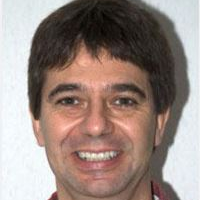The Future of Coral Reefs: Research Submitted to ICRS 2021/2, Bremen, Germany
A special issue of Oceans (ISSN 2673-1924).
Deadline for manuscript submissions: closed (30 September 2022) | Viewed by 29853
Special Issue Editors
Interests: ecophysiology; biogeochemistry; microbial ecology
2. Helmholtz Institute for Functional Marine Biodiversity at the University of Oldenburg (HIFMB), Ammerländer Heerstrasse 231, 26129 Oldenburg, Germany
Interests: coral reproduction and restoration; phase shifts in benthic communities; coral and sponge microbial symbiosis
Special Issues, Collections and Topics in MDPI journals
Interests: coral reefs; reef fish; sharks; reef fisheries; corals; marine conservation; marine protected areas
Special Issues, Collections and Topics in MDPI journals
Interests: conservation; social-ecological systems
Interests: coral bleaching; biogeochemistry; paleoceanography
Special Issue Information
Dear Colleagues,
Second Special Issue linked to the Bremen ICRS.
In connection with the 14th International Coral Reef Symposium (ICRS 2020, https://www.icrs2020.de/), originally planned to be held in Bremen, Germany, in July 2020, arrangements were made with the journal Oceans to produce a Special Issue associated with the conference, to which conference delegates could submit papers based on their oral presentations or posters.
However, due to the coronavirus epidemic, the conference was postponed. A virtual conference was held as the 14th ICRS online in July 2021, while an in-person meeting (15th ICRS) is now expected to take place in July 2022 in Bremen, Germany.
Nevertheless, to provide attending delegates with an appropriate outlet for their material, a first Special Issue (entitled “The Future of Coral Reefs: Research Submitted to ICRS 2020/21”) based on papers submitted by July 2021 is in the process of publication in Oceans. Twelve accepted manuscripts will published online as they are finalized (https://www.mdpi.com/journal/oceans/special_issues/coral_reefs) by 8 November 2021 (more will come later), thus ensuring publication of 2020/21 manuscripts in the near future.
However, since the follow-up in-person meeting is now to take place in July 2022, it has been agreed that a second Special Issue will be published in 2021/22 in Oceans. This sister volume will retain the same name and continue to reflect the conference themes. Manuscripts for this second volume need to be submitted by 30 September 2022.
Oceans is an open access journal that normally charges authors a fee (https://www.mdpi.com/journal/oceans). However, MDPI have agreed with the organizers of the 14th and 15th ICRSs to publish papers prepared for ICRS2021 virtual and ICRS2022 in-person free of any charge. This is a unique opportunity for participants of the 14th and 15th to publish their work in an international, open access, and peer-reviewed journal for free.
Instructions for submission may be found at https://www.mdpi.com/journal/oceans/instructions. All submissions will be subject to standard reviewing procedures to ensure quality standards of writing and accuracy. Oceans has no restrictions on the length of manuscripts, and hence short papers based on either oral presentations or posters will be considered.
This second volume will be edited by Oceans editors in cooperation with an editorial support team, led by Prof. Dr. Christian Wild, chair of 14th and 15th ICRS.
Authors whose first language is not English are encouraged to submit manuscripts, but they need to have their text checked by a native English speaker or make use of MDPI’s English editing service (https://www.mdpi.com/authors/english). Only manuscripts which are well written in quality scientific English will be considered and sent out for review.
Prof. Dr. Christian Wild
Prof. Dr. Peter Schupp
Prof. Dr. Rupert Ormond
Dr. Sebastian Ferse
Dr. Leila Chapron
Dr. Ronald Osinga
Guest Editors
Manuscript Submission Information
Manuscripts should be submitted online at www.mdpi.com by registering and logging in to this website. Once you are registered, click here to go to the submission form. Manuscripts can be submitted until the deadline. All submissions that pass pre-check are peer-reviewed. Accepted papers will be published continuously in the journal (as soon as accepted) and will be listed together on the special issue website. Research articles, review articles as well as short communications are invited. For planned papers, a title and short abstract (about 100 words) can be sent to the Editorial Office for announcement on this website.
Submitted manuscripts should not have been published previously, nor be under consideration for publication elsewhere (except conference proceedings papers). All manuscripts are thoroughly refereed through a single-blind peer-review process. A guide for authors and other relevant information for submission of manuscripts is available on the Instructions for Authors page. Oceans is an international peer-reviewed open access quarterly journal published by MDPI.
Please visit the Instructions for Authors page before submitting a manuscript. The Article Processing Charge (APC) for publication in this open access journal is 1600 CHF (Swiss Francs). Submitted papers should be well formatted and use good English. Authors may use MDPI's English editing service prior to publication or during author revisions.










